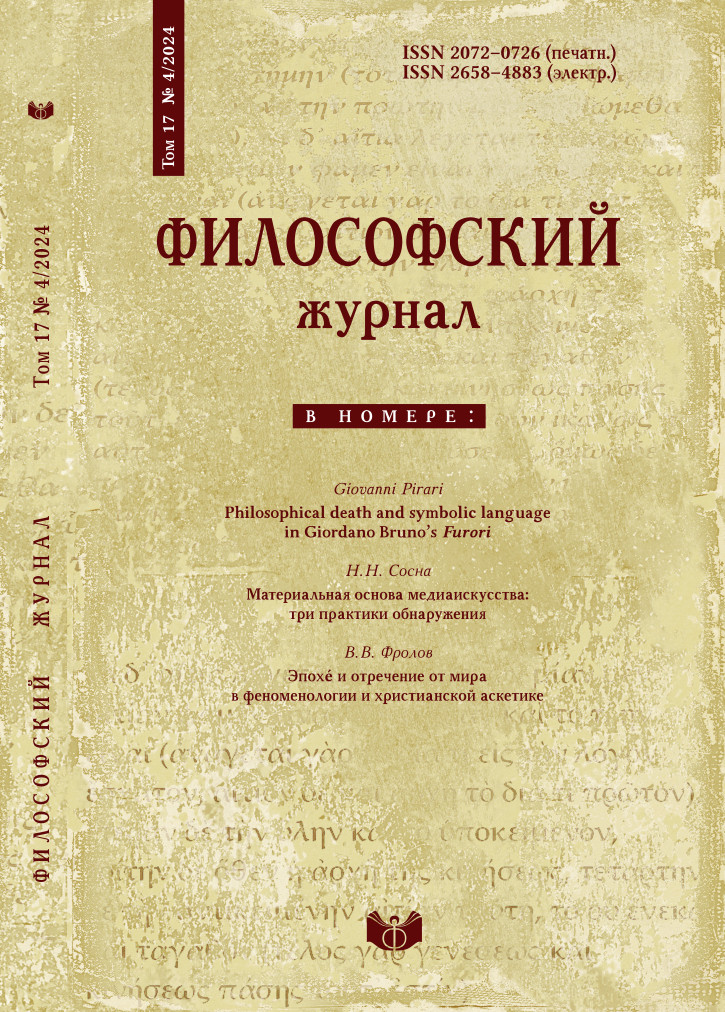Philosophical death and symbolic language in Giordano Bruno’s "Furori"
DOI:
https://doi.org/10.21146/2072-0726-2024-17-4-48-62Keywords:
death, symbol, subject, Оne, kiss, love, Giordano Bruno, Renaissance, NeoplatonismAbstract
In the history of philosophy, death has not only represented the end of biological life. In the Platonic tradition, especially in its prolific interweaving with the Christian belief, death has come to symbolize the culmination of the philosophical effort, indeed even the very substance of philosophizing, which, as Plato said in the Phaedo, is a kind of exercise in dying. In this article we investigate the meaning and implications of this ‘philosophical death’, which, representing a moment of profound change in the cognitive subject, also involves a change in the relationship that it maintains with the philosophical discourse. Platonism, Christianity, symbolism: the Platonizing Christian Renaissance represents the historical moment in which these elements flourished together in an unequaled way. Тo investigate the aforementioned theme, we’ll analyse Giordano Bruno’s Eroici Furori: here the image of the mors osculi – which from the pages of the Song of Songs through the centuries is enriched with Neoplatonic interpretations – becomes a symbol of this transcending of individual subjectivity and rational discursivity into the intellectual contemplation of the One. In these pages we demonstrate how contemplative silence and symbolic production do not represent something extraneous to philosophical activity or even the cessation of it, but rather the highest and culminating moment of an intellectual and philosophical effort, as it is attested by a thousand-year-old tradition, today partly forgotten.






